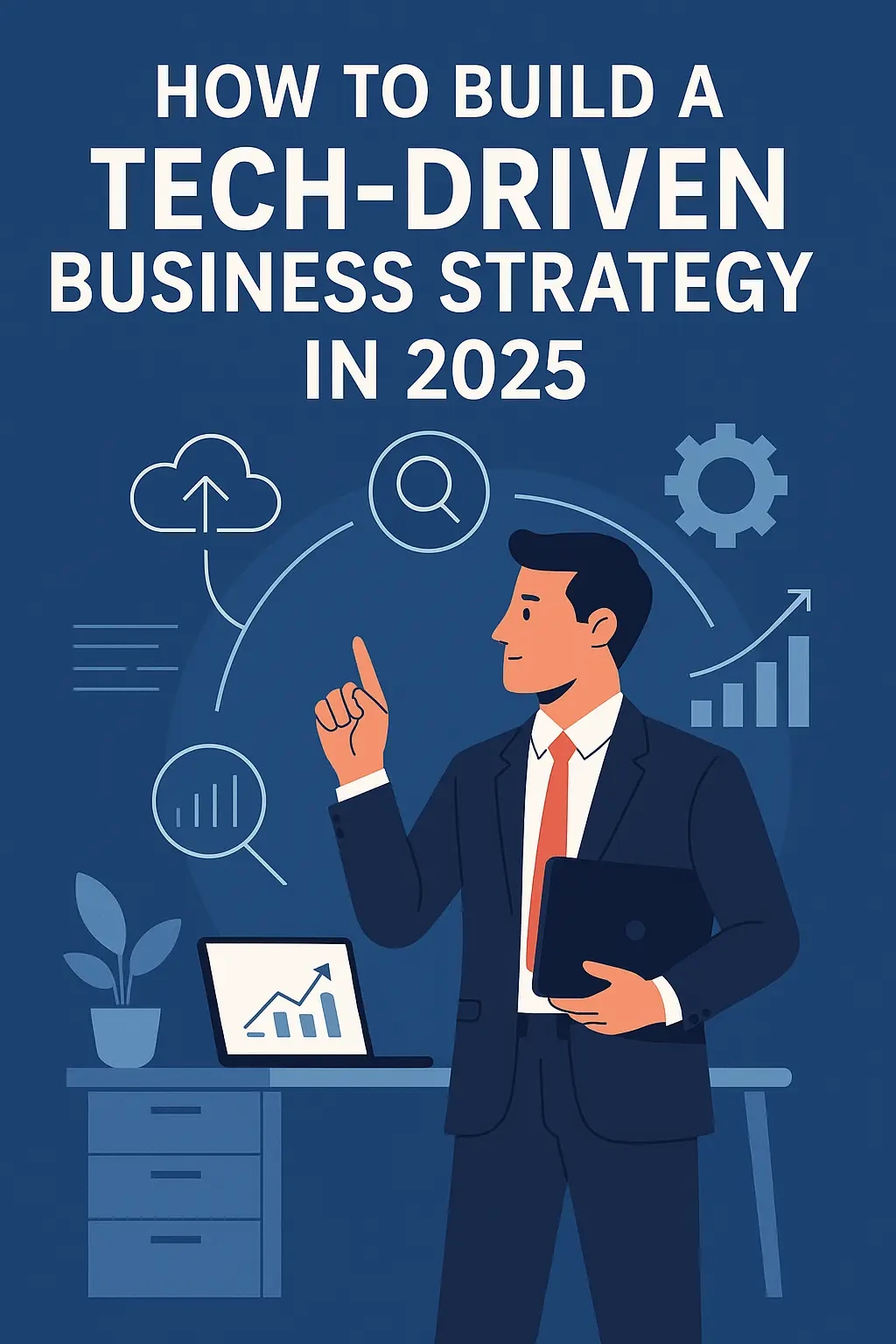In Today’s Rapidly Evolving Digital Landscape Businesses that fail to adapt to technological advancements risk being left behind. As we step into 2025, it’s no longer a question of if you should build a tech-driven strategy, but how. Let’s break down what it means and how you can develop one that gives your business a competitive edge.
What Is a Tech-Driven Business Strategy?
A tech-driven strategy integrates technology into every aspect of business operations — from customer experience to internal workflows and market expansion. It’s not just about using tools; it’s about aligning technology with your business goals to drive smarter decisions and better outcomes.
Why 2025 Is a Turning Point
By 2025, artificial intelligence, automation, big data, and cloud computing are no longer emerging trends — they are business essentials. Companies that adopt them strategically will be able to:
- Improve efficiency and reduce costs
- Deliver better customer experiences
- Innovate faster
- Make data-driven decisions
Key Technologies to Include in Your Strategy
- Artificial Intelligence (AI) – For automation, customer service (like chatbots), and predictive analytics.
- Cloud Computing – To scale operations, enhance collaboration, and reduce infrastructure costs.
- Internet of Things (IoT) – To gather real-time data from physical operations.
- Cybersecurity Tools – To protect data as digital transactions rise.
- Data Analytics Platforms – To transform raw data into actionable insights.
Steps to Build a Tech-Driven Strategy
- Define Your Business Goals
Growth, efficiency, customer retention — technology must align with what matters to you. - Audit Your Current Capabilities
What tools are you already using? What’s working? What’s not? - Identify Gaps and Opportunities
Where can technology help you do better? Is it automation, communication, or data insights? - Select the Right Tools
Focus on scalable, user-friendly tools. Don’t just buy tech for the hype — it must serve a purpose. - Train Your Team
Tech is only as powerful as the people who use it. Invest in upskilling. - Monitor and Iterate
Regularly track KPIs and adapt your strategy as your business and tech evolve.
Real-World Examples
- Retail: Brands using AI to forecast demand and manage inventory.
- Finance: Fintech startups leveraging machine learning for fraud detection.
- Healthcare: Clinics using telehealth and digital patient records.
Final Thoughts
A tech-driven strategy isn’t a one-time setup — it’s a continuous process of integration, evaluation, and innovation. The good news? You don’t need to be a tech giant to build one. Start with clear goals, stay agile, and let technology work for your business.
